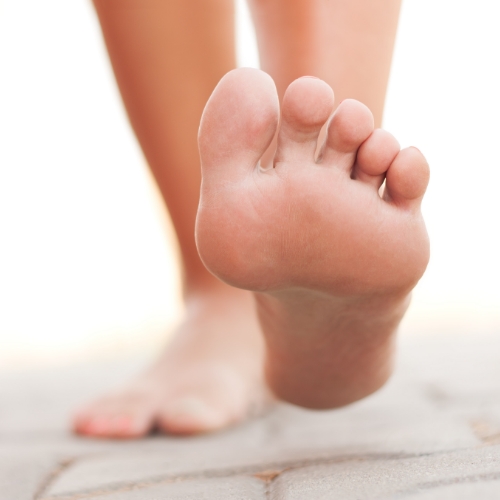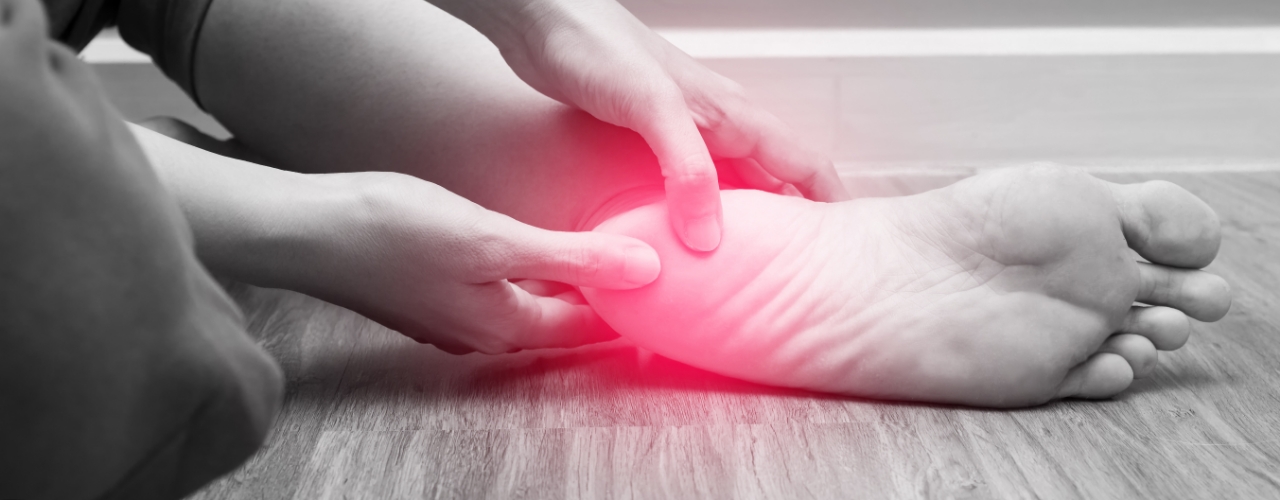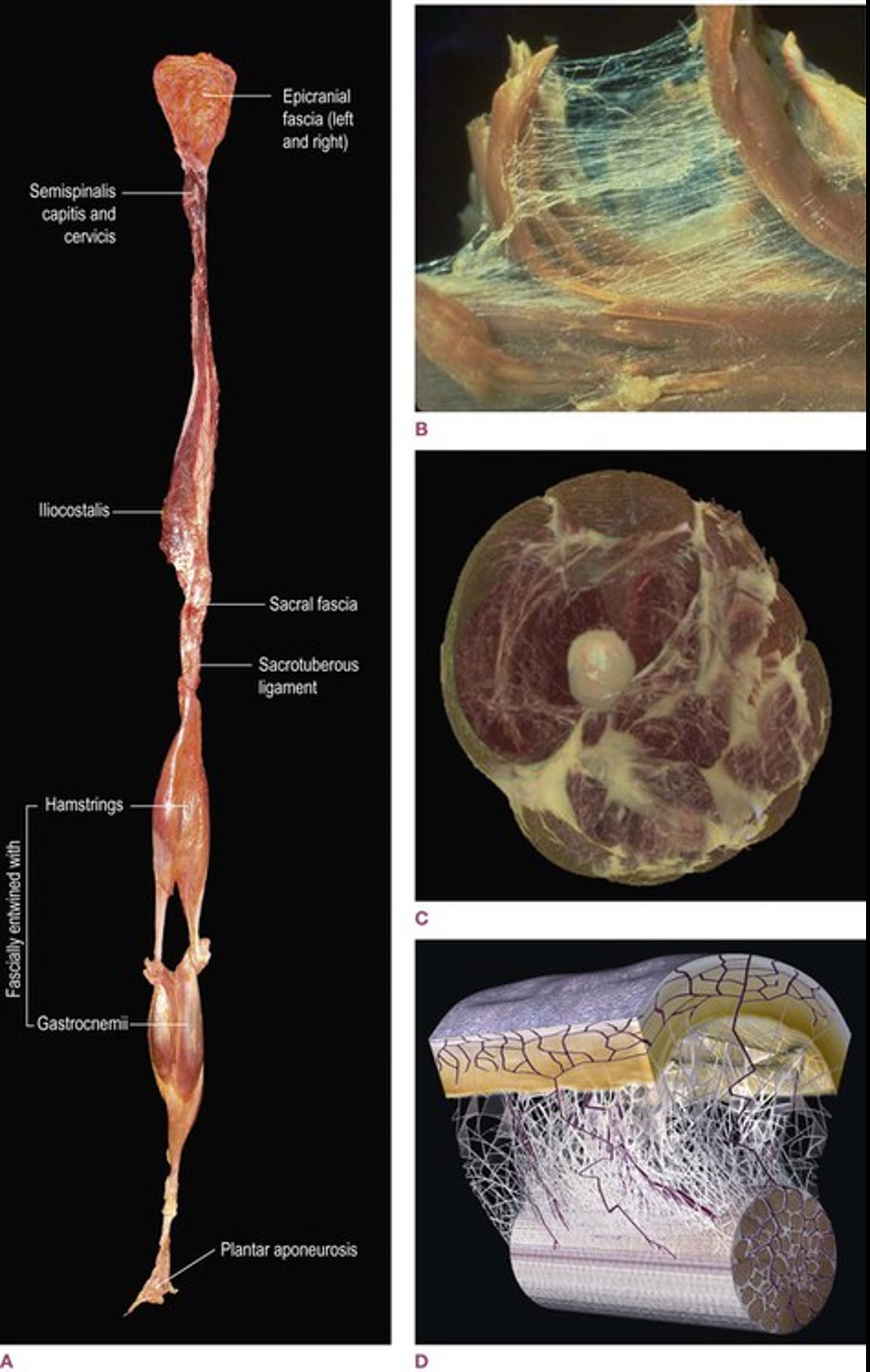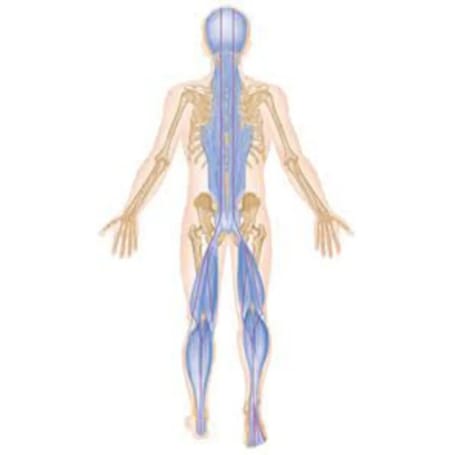Physical Therapy for Foot Pain Can Provide Relief
Experience Lasting Relief from Foot and Ankle Pain at Omni Physical Therapy and Wellness
Omni Physical Therapy and Wellness, located in Garden City, offers a holistic and comprehensive approach to treating persistent foot and ankle pain. Our methods aim to address the root causes of pain, ensuring long-term health and mobility. You can schedule an appointment with us to rediscover the joy of daily activities without any pain.
Why Choose Omni Physical Therapy?
- Quick and Effective Relief: Most patients experience significant improvement in just 1-2 visits.
- Non-Invasive Treatments: Achieve pain relief without the need for cortisone shots or expensive shoe inserts.
- Expert Care: Our team of skilled therapists uses advanced diagnostic tools to pinpoint the exact cause of your pain.
Our Unique Treatment Approach
- Biomechanical Evaluation: Understand the mechanical causes of your pain with our state-of-the-art 3D Movement and Posture Analysis.
- Fascial System Evaluation: We assess how interconnected bodily systems contribute to your foot and ankle pain, ensuring precise treatment.
- Pain System Evaluation: We identify and address the specific elements that perpetuate your pain, offering targeted interventions.
I found relief

Ready to Step into Comfort?
- Schedule Your First Visit: See improvements from your first session with our targeted therapeutic techniques.
- Learn More: Visit our detailed service pages to understand how we tailor treatments to your specific needs.
- Contact Us: Have questions or need more information? Our friendly staff is ready to assist you.
Visit Us Today
Discover how Omni Physical Therapy and Wellness can help you regain your freedom of movement and live pain-free. Schedule your appointment today and take the first step towards a healthier lifestyle.
Frequently Asked Questions
Why does my foot hurt?
Overcome Common Foot Conditions and Reclaim Your Mobility!
Physical therapists commonly treat a variety of foot conditions to help patients alleviate pain and regain mobility. The most common foot conditions treated at our Garden City, NY physical therapy clinic include:
- Plantar fasciitis: The most common cause of foot pain is plantar fasciitis. Plantar fasciitis has become a common term used by many to describe all kinds of foot pain. Technically, plantar fasciitis has a new name ‘Plantar fibromatosis,” because it is a degenerative fasciosis without inflammation.
- Achilles Tendinitis: Inflammation of the Achilles tendon, which connects the calf muscles to the heel bone, resulting in pain and stiffness at the back of the ankle.
- Plantar fascia rupture: Sudden, acute, knife-like pain, ecchymosis, which is more proximal and may be associated with a palpable gap.
- Fat pad syndrome: Atrophy of heel pad, common in elderly and diabetic patients, pain is usually centrally located and is not characterized with morning pain.
- Calcaneal stress fracture: Pain with weight-bearing, worsens with prolonged weight-bearing, diffuse heel tenderness.
- Calcaneal bursitis (Policeman’s heel): Burning, aching or throbbing type of pain, swelling, and erythema of posterior heel Boxter’s nerve entrapment: Pain is more proximal and dorsal, no sensory disturbance
- Medial calcaneal nerve compression: Occurs in tarsal tunnel, positive Tinnl’s sign and altered sensation of medial side of the heel.
- Seronegative arthropathies: Usually bilateral, with a history of back pain, urethritis, uveitis, elevated blood inflammatory markers, etc.
- Spinal stenosis and L5-1 nerve root irritation, Achilles tendinopathy, plantar fasciitis, and stress fractures
- Bunions: A bony protrusion that forms at the base of the big toe joint, causing the big toe to angle inward, leading to pain, swelling, and discomfort.
- Metatarsalgia: Pain and inflammation in the ball of the foot, often caused by overuse, improper footwear, or high-impact activities.
- Stress Fractures: Tiny cracks in the bones of the foot, stress fractures can develop from the repetitive impact of running.
- Flat Feet (Pes Planus): A condition where the arch of the foot collapses or is underdeveloped, potentially leading to pain and discomfort in the feet, ankles, or lower leg.
- High Arches (Pes Cavus): An excessively high arch of the foot can cause pain, instability, and increased pressure on the ball and heel of the foot.
- Tarsal tunnel syndrome: The tarsal tunnel is the groove where the nerve that runs from the lower leg through the ankle to the foot travels.
- Hammertoes: An abnormal bending of one or more toe joints, creating an unusual appearance and painful pressure points.
- Morton’s Neuroma: A thickening of the tissue around a nerve leads to the toes, causing sharp pain, numbness, or tingling in the ball of the foot.
MRI or ultrasound confirms the diagnosis.
Will plantar fasciitis go away on its own?
Plantar fasciitis may improve independently, but it can take more than a year. Our patients typically get relief in one week. We guarantee you will feel at least 40% better after your first visit.
How do you get rid of plantar fasciitis fast?
Ready 1, 2, 3 pain is gone…
At our Garden City location, we guide you through 3 stages to permanently address your heel pain and its underlying causes.
Stage 1: Identification
In this stage, we identify the causes and sources of your heel pain. You will walk out without pain after the very first visit once we identify the cause of your pain.
Stage 2: Assimilation
We develop a corrective and integrative program, including specific stretches and strength training regimens tailored to address the identified issues that may be causing your pain.
Stage 3: Health Advancement
In this stage, you will learn a lifestyle that eliminates the possibility of developing foot pains and improves overall health and longevity.
If you want to know more, read below or Schedule an appointment now to experience plantar fasciitis or heel pain relief. You can even opt to call us for any information.
The solution to the problem is based on
- Cause of pain
- Source of pain
- Stage of pain
- Comorbidities
What are the causes of heel pain?
The heel pain and plantar fascia pain can start from an overuse injury to a stress fracture of the bones. If left untreated, the pain can worsen and make it hard for you to walk on it. The pain can bother you from the first time you get out of bed or worsen as the day progresses.
The current medical consensus on treating heel and foot pain does not address the root causes but merely the symptoms. We pledge not just to treat the symptoms but also to address the cause.
Limited mobility in the ankle joint, high body weight, and foot structure (such as flat feet or a high arch) as the culprits for this condition. However, not everyone with the same issues develops foot pain. Some missing links might be the culprit. Find out what your missing link is today.
How about a heel spur?
There is a connection between foot pain and a heel spur. However, upon closer examination, the presence of a heel spur may not necessarily be the cause of plantar fasciitis pain.
The co-existence of these interconnected tissues does not necessarily mean one is causing the other. The heel spur tells you that the forces acting on the feet are greater than typical bone structures can absorb, leading to bone modification to adapt to increased force demands. These same force demands could also be causing plantar fasciitis pain.
I hurt my heel months ago. Why is it still hurting?
While a recent change in activity, improper footwear, and poor technique can precipitate the pain, they do not explain how it persists even after months of discontinuing the precipitating factors.
Certain medical conditions such as gout or rheumatoid arthritis need to be treated to find relief from heel pain if they are the causes. If the foot pain is due to a plantar fascia rupture or an acute nerve injury, there is a specific timeline for healing.
At Omni Physical Therapy and Wellness, we will help you create the optimal conditions for the fastest and most effective healing if the above are the causes for your heel pain or foot pain. More often than not, they are only present in a very small percentage of foot pain sufferers.
How do you get rid of heel pain?
As a holistic physical therapy center in the heart of Garden City, we take a comprehensive approach to addressing issues by considering the entire body. We aim to identify the exact cause of the problem and treat both the cause and the symptoms simultaneously, providing immediate pain relief and achieving long-lasting results in a shorter time compared to other approaches.
The treatment starts with a comprehensive evaluation of your condition. In most cases, we evaluate the issue in three ways to bring about the best treatments:
1. Biomechanical Evaluation
If your pain started with activities or an injury or if you are told that you have flat feet, this will help you identify the mechanical causes of the heel pain. We not only use range, strength, and flexibility tests to evaluate biomechanical issues, but we also use a computerized 3D Movement and postural scan that can give you an 8-page report of every joint and muscle involved and show us exactly what we need to do to correct the mechanics.
One of our patients who developed heel and foot pain while playing tennis was going to many treatments with no change. The 3D scan demonstrated that he had a weakness in a hip muscle that was causing increased effort on his foot structures and irritating the plantar fascia. Our intervention helped him get back to his usual self in 10 visits.
2. Fascial System Evaluation
When dealing with chronic pain conditions like plantar fasciitis or heel pain, it’s crucial to consider how the body’s different systems are interconnected. The muscles in the foot and ankle are linked to the rest of the body in various ways and need to be activated to produce force while also absorbing external forces. The structures in the feet are prone to injury and require constant repair due to their predisposition to get hurt easily.
Many heel or foot pain sufferers have reduced flexibility, coordination, and strength in this tissue-linking mechanism. This lack of coordination between the structures leads to foot and ankle pain and inuries.
Many heel or foot pain sufferers have reduced flexibility, coordination, and strength in this connective tissue linking system. This lack of connection between the structures will affect the transmission of forces. Leading to the point of the plantar fascia breakdown.
In fact plantar fascia is just one part of the more extensive fascial system connecting the entire body. Please take a look at the image of the complete facial system provided below.
A. FIG. 1.1 image(A) A fresh-tissue specimen of the myofascial meridian termed the Superficial Back Line, dissected intact by Todd Garcia from the Laboratories of Anatomical Enlightenment. Acknowledge the picture being reproduced from the website kindly: https://basicmedicalkey.com/fascia-and-biomechanical-regulation/
B. A dissection of teased muscle fibers, showing surrounding and investing endomysial fascia. Acknowledge the picture being reproduced from the website
C. A section of the thigh, derived from the National Library of Medicine’s Visible Human Project, using National Institute of Health software, by structural practitioner Jeffrey LinnAcknowledge the picture being reproduced from the website image(D) A diagram of the fascial microvacuole sliding system between the skin and the underlying tendons as described by Dr J. C. Guimberteau. (Diagram Acknowledge the picture being reproduced from the website https://basicmedicalkey.com/fascia-and-biomechanical-regulation/
We have developed a unique stretch to relieve your pain symptoms. Here is a video of how to perform it. If done right, you will immediately feel the pain relief after repeating it five times. Here is a link to purchase the strap here For $15.99 (+ $3.99 for shipping and tax)
The second part of treating the link system is by reinforcing it. This will help prevent reinjuries while the link system is still healing. We employ various kinds of Kinesio taping and other less-known customized taping techniques. Read more about the taping techniques that we use here.
The strengthening program for this global system has helped our patients experience lasting Relief. For many, this has provided the best pain relief for their plantar fasciitis in months. Make an appointment today to experience the relief you deserve.
3. Pain System Evaluation
The Pain system evaluation is important in persistent heel pain. You have persistent heel pain if you have pain for more than three months. We identify three distinct parts that make the pain persist. First is the input signals from various structures in and around your foot.
Secondly, we identify the unique way your nervous system interprets incoming signals. Finally, we will differentiate the output the body’s systems put in place to heal or protect the injured tissue. Even though the system to heal and protect is necessary, the M spasm and inflammation that keeps your pain active are usually unnecessary or at least exaggerated.
Should I get a Steroid injection for my heel/plantar fascia pain?
The study conducted by Lemont H et al. from Temple University School of Podiatric Medicine in Philadelphia concluded, after reviewing microscopic findings from 50 cases of heel spur surgery for chronic plantar fasciitis, that there was significant degeneration with fragmentation and degeneration of the plantar fascia and bone marrow vascular dilatation.
“Plantar fasciitis” is a degenerative fasciosis without inflammation. In other words, it is NOT a “fasciitis” but rather a disintegration of connective tissues. They suggested that these findings indicate that treatment regimens, such as repeated corticosteroid injections into the plantar fascia, should be reevaluated, considering their potential to cause plantar fascia rupture due to further degrading the health of the structures in the long term.
Most of our plantar fascia patients explain the experience of pain is better than steroid injection after their first five minutes of treatment.
Why is my pain coming back or not relieving after the stretching?
The stretching exercise we teach is just one component of the entire treatment plan. It is imperative to identify and address the underlying cause of the issue. While stretching can be compared to taking Tylenol to alleviate pain, the other treatments offered at our clinic are comparable to taking antibiotics when someone has an infection.
References:
1. Martin RL, Davenport TE, Reischl SF, et al. Heel pain—plantar fasciitis: revision 2014. J Orthop Sports Phys Ther. 2014; 44: A1– A33. https://doi.org/10.2519/jospt.2014.0303
2. Plantar fasciitis: a degenerative process (fasciosis) without inflammation. Lemont H, Ammirati KM, Usen N.J Am Podiatr Med Assoc. 2003 May-Jun;93(3):234-7.PMID: 12756315
The future of pain-free walking is just one step away
Utilizing the holistic and scientifically proven treatments offered at Omni Physical Therapy & Wellness, you can conquer foot pain and rediscover the joy of an active life. Schedule your physical therapy consultation in Garden City, NY today and embark on your journey toward lasting relief and restored function!
Your Next Steps…
Request An Appointment
Receive A Custom Treatment Plan
Work Hard and Progress In Your Recovery
Recover & Enjoy Life Pain-Free!



